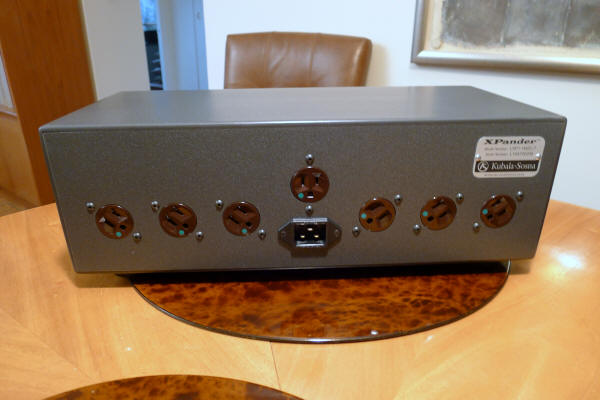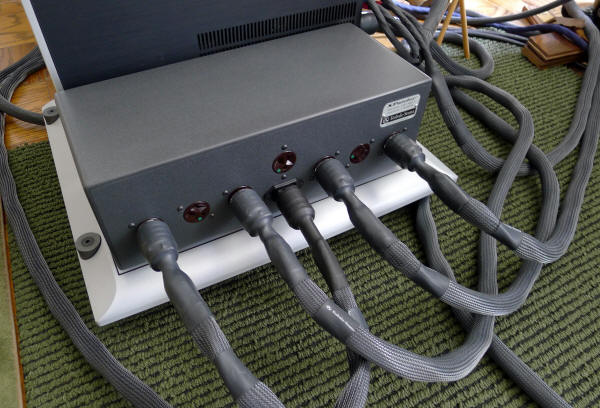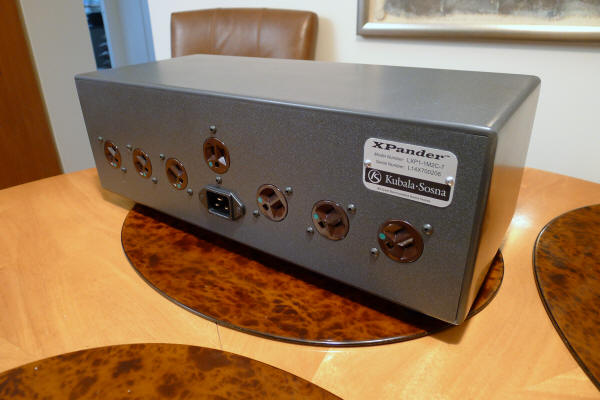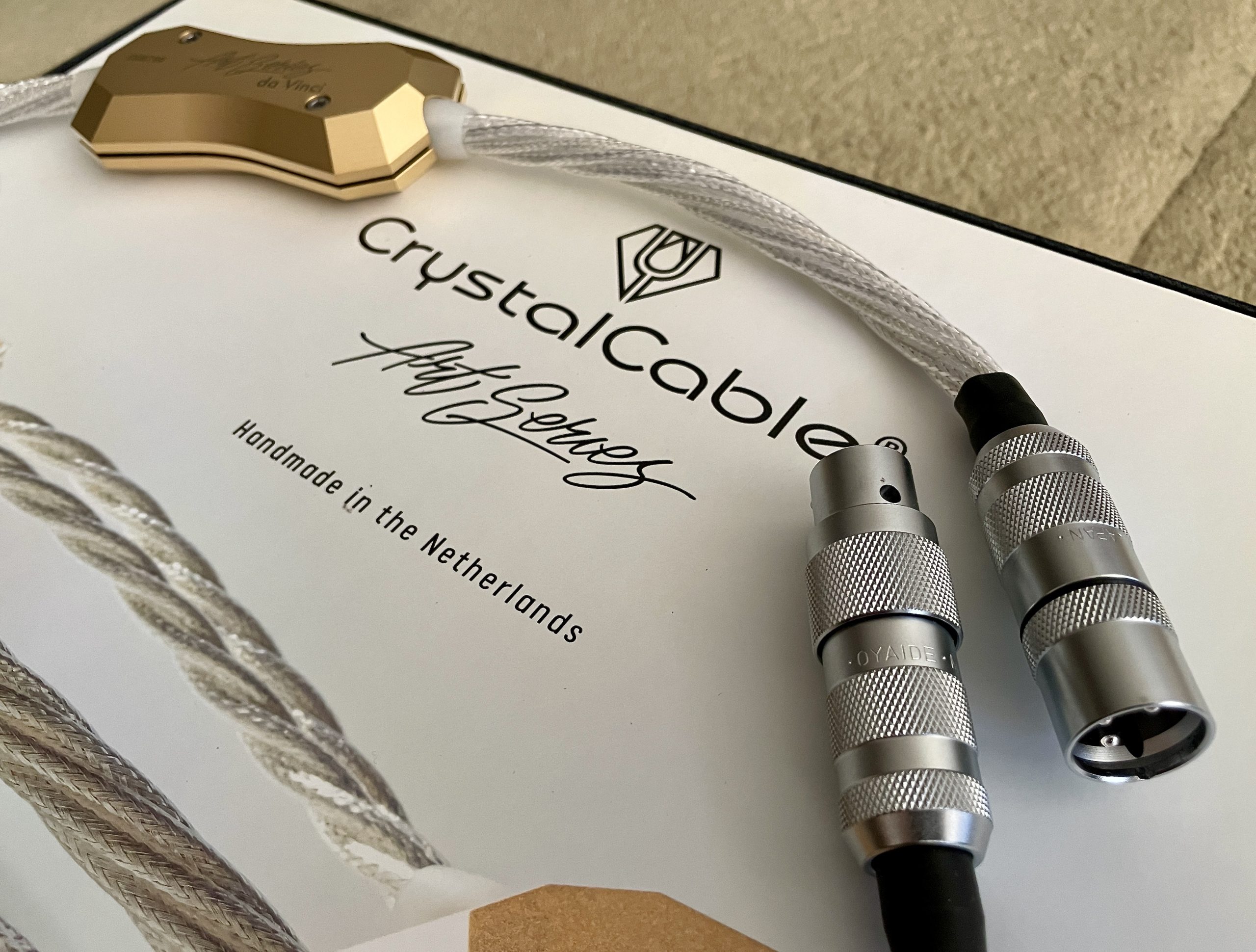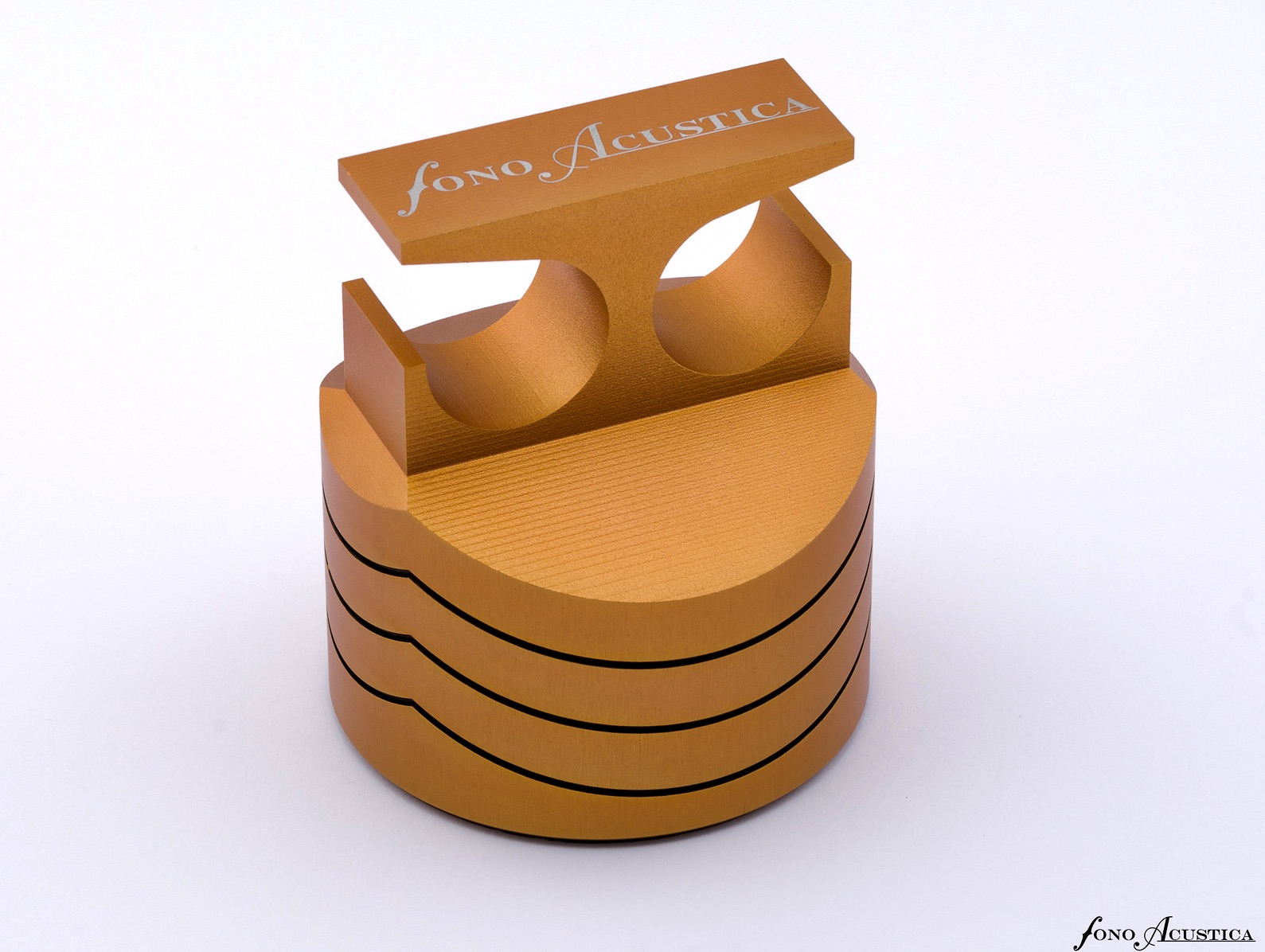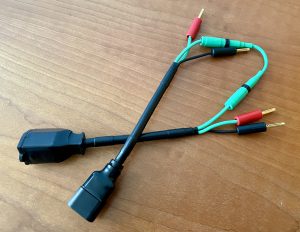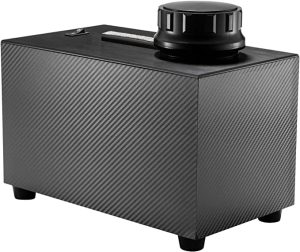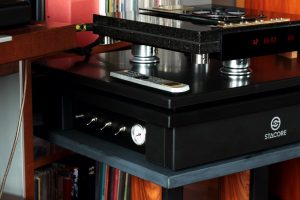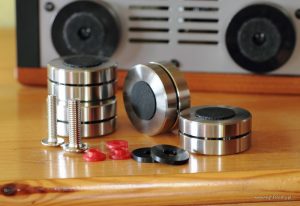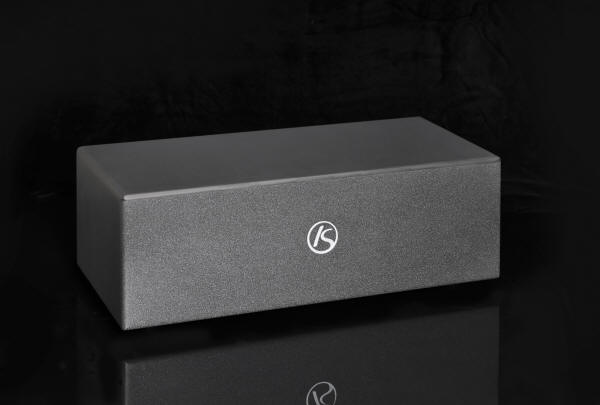
Talking About Power Distributors
(With a response by Jim Merod)
Every time I'd get in a new power product, Joe Kubala would come over to check it out.
And always, after assessing it, the same question lingered in the air: when—not if—would we see a Kubala-Sosna Power Distributor?
During the five years it took to develop the product, I was given early iterations to try out. The first of these prototypes didn't look like much—just a grey metal utility box with seven outlets—but already showed promise and I favored it over the mid-level power strips I owned. The second sample, a thick, black plastic box, came closer to the best I've tried. Without a doubt, that is the HB PowerSlave Marble, a gorgeous Cadillac of German manufacture, with a $9K MSRP that injected an insane amount of dynamic slam and thrust power.
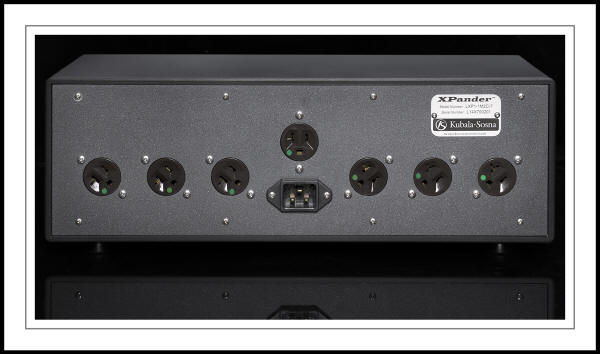
And now, the much-anticipated Kubala-Sosna XPander production unit is in house.

First Impressions
I'm listening to the Suite from The Bolt (track 12 from Russian Ballet Suites, Pentatone SACD 5186 032). Very colorfully scored for various soloists, duets, and full orchestra, it offers a wide selection of material to test your system. While some of the melodies are reminiscent of Prokofiev's Romeo and Juliet, much is unfamiliar Shostakovich.
The system was wired soup to nuts with Elation! cables, including both distributor prototypes. My initial reaction when the XPander replaced the black plastic box was a simple and emphatic, "Hey, this is really straight-up, clean and quiet." There's nothing romantic, no bloomy cushions of air around instruments, no excess reverb —no colorations, period. There are also no artifacts of the mechanical type, such as grain and edginess. It moves even further into the neutral zone than the Elation! series of wires.
After a while, it dawns on me: "By golly, it's also a beautiful sound. Each instrument is fully expressed and unique."
Neutrality
To demonstrate its neutrality, I compared two CDs featuring two of the finest tenors on the scene today. We put Jonas Kaufmann singing Mozart, Schubert in the tray (Decca B0014132-02). The sound was delivered without frills on this commercial Red Book CD, not pretty and not audiophile. I thought, perhaps it was too neutral? Lynn commented that, "You're just missing all that blurry stuff."
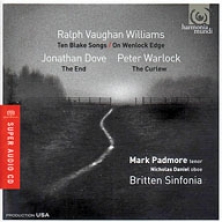
Next up was Mark Padmore singing Vaughan Williams' On Wenlock Edge (HMU807566). All of the beauty and audiophile "stuff" promptly appeared on the stage, while the undesirable blurry stuff was left where it belongs—unspoken. Reference level sound filled the room with this superbly engineered harmonia mundi SACD.
The first takeaway is the XPander is as uncolored as any device on the market. Second, in the same breath, it is capable of conveying all of the subtlety and refinement—the beauty—of the instruments. Third, the quality of the source is of paramount importance when you're playing with gear at this level. Those days when you could put on any two CDs and the sound would be more or less the same are gone.
A Family Affair
The XPander comes with the Elation! level of sonic goodness. That means that the frequency sweep is linear and of consistent quality, not warm below and chilly on top, for example. It means a coherent and integrated sound that is non-fatiguing and non-irritating. But above all, it means the Elation! level of musical detail and timbral complexity.
Whenever I audition another cable brand and swap back to the Elation!, I'm struck anew by how it renders the sheer quantity of factoids describing the instruments and how they operate (the so-called "action" of the instruments), and the impressive amount of natural and realistic color delivered. Unlike some Class A cables that are chintzy with overtones, timbres are delightful—the Elation! does not skimp here! As far as I'm concerned, these two things set the Elation!-level K-S products apart.
Most cable products put out a sound that is a reasonable facsimile of the instrument, but they don't account for the fact that it's a moving target. After the initial transient, the sound of an instrument is hardly static. It dynamically alters with changes in the musician's breath control, bow pressure, or mallet intensity. It does not stay put. Few products morph in these ways. The Elation! captures the shifting and shimmying of the instrument.
Control & Grip
To fill out the XPander portrait, we need to talk about control. The XPander exerts a very firm grip on the subject. Even as images gain in size, mass and solidity, they remain firmly under control. They are simply not allowed to wander about, loose and vague. They remain at their coordinates, lending the stage a high degree of precision.
Control also applies to the frequency bands, i.e., the bass is held in check and not permitted to boom; the treble extends, but refrains from sizzle.
Dynamics
The best audio power products keep an open window as a crescendo unfolds and remain sufficiently transparent so that you can hear inside the crescendo. It doesn't clog up and bog down; the soundstage does not collapse into the center. Then there are the very best products, which manage to playback those peak SPLs with effortlessness and apparent ease. That's what's happening now.
On the other side of the scale, I'm tempted to raise the volume, because there's some really low-level stuff coming through now. Interesting things are going on down there.
Tonal Balance
In a direct comparison, when I introduced the XPander, the tonal balance tilted downwards. The XPander is very far from a bright sound; rather, it is notable for being weighty. I compensated by removing the last of the Harmonix Room Tuning Discs around the room and, once adjusted, frequency response is ruler flat. (Removing tweaks is always a good thing. Yes, the discs work and can benefit the sound, if it needs tweaking. I still have plenty of Acoustic System Sugar Cubes around the room. But all of these tweaks—and I've tried a lot—introduce unintended negative effects. You are better off choosing components that don't need the Band-Aids.)
Installation & Burn-In
From the first glance, the XPander's good looks impress. The high density, 1/2" thick, dark grey Anthracite Corian enclosure is very nicely finished and well-made. Be careful of fingerprints!
The XPander is a passive device without any active components. The recommended configuration is to place the power distributor in front of the source components, including preamp. Amps should go direct to the wall.
Inside the box, single AC outlets were used, rather than duplexes, and each is individually point-to-point wired with Elation! (Duplex outlets would have been easier, but they use buss bars, something that K-S wanted to avoid.) The XPander has a 20 amp IEC for the secure grip and high current capacity it provides. You will need a 20 amp power cable.
The XPander needed a good two weeks to achieve full burn-in before I heard the refinements mentioned above. Early on a slight amount of constriction was present in the treble. Then all constraint goes away and the control remains alongside an equal amount of ease.
Conclusion
You'll recognize the Elation! signature in the new Kubala-Sosna XPander Power Distributor. All of the Elation! goodness is there. What's new is the XPander manages to nudge the needle even further into the neutral zone.
Yet it is fully expressive of the beauty in music—the XPander balances both sides. This is great stuff, the best product yet from the K-S brand. Perhaps the designers at K-S have been paying attention to my rants, or reading my reviews to have come up with a product that has all the qualities I've been talking about.
You get all of this and at a relative bargain price, compared to the competition. The XPander is a keeper and will become an essential part of my reference system.
Post Script
Now, I wonder what Jim Merod, "the Master of the 30-Second Review," will have to say? (The appellation comes from a session when we were comparing turntables. In much less than a minute, he voiced a capsule review and nailed the differences.)
XPander Power Distributor
Retail: $4800
Elation! 20 Amp Power Cord
Retail: $2350/2 meters
Kubala-Sosna Research, LLC
www.kubala-sosna.com

A Response to Marshall Nack's Review of the Kubala-Sosna XPander
Jim Merod
In September of this year I was warmly welcomed into Marshall Nack's comfortable Manhattan audio den for listening and cheerful camaraderie. His extraordinarily discerning and friendly wife made our time there and our dinner afterward at a superior nearby restaurant more than merely "enjoyable," but truly memorable.
I came away with a very favorable impression of the "Nack Sound Room" and its chock-to-the-top gaggle of truly great sonic equipment. This is no average "audiophile" set up. It is a stunning system created in a gorgeous and brilliantly crafted domestic setting. I enjoyed every moment there.
Reading Marshall's review of the XPander A/C unit, I feel closer to the latent core of our obviously shared aesthetic tastes and musical outlooks. Marshall seems to favor classical musical (though it's clear he has a wide- ranging musical palette), while jazz resides at the heart of my listening and recording universe. Although our critical vocabularies and angle of critical discernment do not intersect or overlap, it is clear that Marshall has experienced the enhancement of recorded sound provided by the XPander in much the way I have. I believe that Marshall's inclination with music (perhaps with art generally) is somewhat Apollonian, to borrow a term from Nietzsche's controversial and path-breaking philosophical classic, The Birth of Tragedy, while my inclination is more Dionysian.
The difference there is that, while I respond to music with a fundamentally emotional awareness, it may be that Marshall experiences music with somewhat more intellectual alertness. Whether I'm correct or not, our differences of enjoyment and habitual attention showed themselves to be vividly compatible the evening we spent together in New York. And so here, too, I believe.
Any qualifications that I'd bring to bear in assessing Marshall's clearly written and deeply appreciative reception of the XPander would amount to quibbles, mostly about choices of terms rather than "things heard" and interpretations rendered. No need, since a writer's vocabulary fits his or her understanding of the world and the self-understanding that shaped itself to those semi-objective, but inevitably subjective, inclinations of thought and expression.
Small differences of terminology aside, Marshall and I have heard the truth of the XPander's expansive ability to make our musical cosmos more alive with sonic detail and lyrical reality. We have heard it, as far as I can discern, very much the same: as a musical world made far truer, more joyful by Kubala-Sosna's miraculous A/C box that both of us (often in these pages somewhat reserved) find to be an essential piece of audio gear at the utmost pinnacle of the audiophile mountain's peak.
Jim Merod




